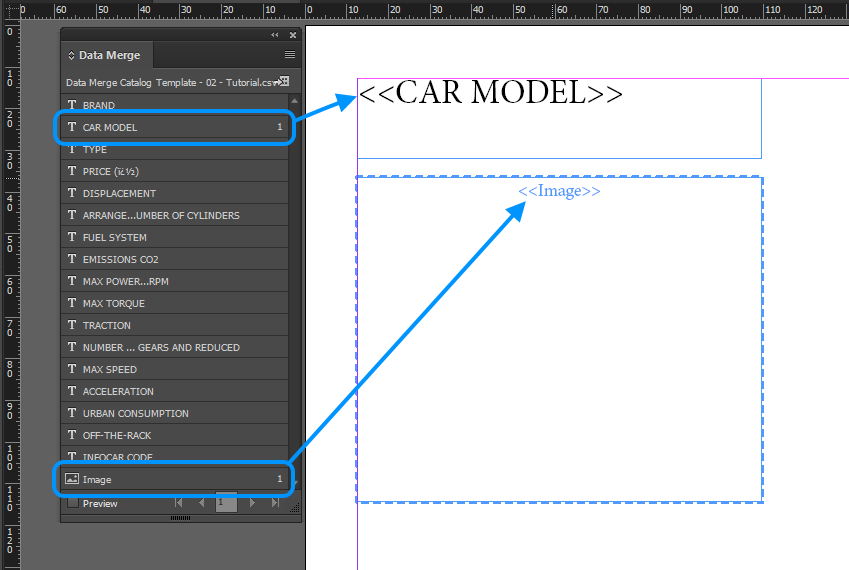

This file usually comes from a spreadsheet or database application. You can, however, create dummy records in your Data Source, do the Data Merge, and then delete the empty records form the Merged Document.ĭata Source is the file with your product data: the file from which InDesign will take all the information to create the Merged Document. You cannot have six products on one page, five on another, and three on another. For example, if you have a Target Document with places for six products, the Merged Document will have six products per page.
Indesign data merge tutorial professional#
Using Best InDesign Templates professional Target Document templates you can create fast, flexible data-driven layouts. It contains any text and images that you placed into the Target Document, and records populated from the Data Source. The publication itself is called the Merged Document.

The Data Source can be in either a comma-delimited (.csv) or a tab-delimited (.txt) file format. The file storing all the data for your publication is called the Data Source. The InDesign document that contains all the data-field placeholders is called the Target Document. InDesign Data Merge enables you to create an InDesign document that contains data-field placeholders, and then automatically populate another document from a file containing all the data. InDesign’s built-in Data Merge feature is an extremely useful solution for creating product catalogues, letters, envelopes, business cards, mailing labels, coupons, ads, or any other data publishing jobs.


 0 kommentar(er)
0 kommentar(er)
